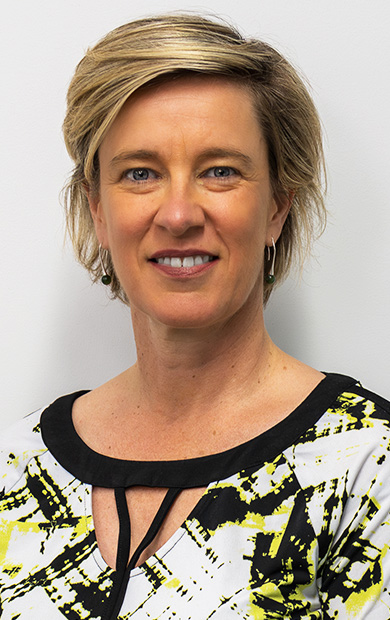New warning on playground safety

During the Easter Holidays and as NSW rebuilds from the worst floods in a generation, local councils, schools, and other public space managers are being urged to ensure new, upgraded, and repaired playground equipment meet Australia’s world-class safety standards to protect the nation’s 4.7 million children under the age of 14[1].
Accidents are the leading cause of death for Australian children under 16 years of age[2].
However, according to a University of Sydney study, children are most likely to be admitted to hospital from an injury suffered at home (24.5%), following by sporting activities (19.0%), and then playground falls (8.0%)[3].
“At first glance, implementing ‘safety standards’ in the construction, upgrade and maintenance of playground equipment in schools, public parks and child-care centres may seem like a no-brainer,” Standards Australia CEO, Adrian O’Connell, said today.
“But adherence to the national standards that cover playgrounds are voluntary, so we’re calling on every local council, every school, and every other public space manager to ensure these standards are embedded in every tender and contract pertaining to playgrounds.”
According to the Australian Bureau of Statistics, 9,581 schools educate four million Australian children[4], while 537 councils operate Australia-wide[5], all of which operate public playgrounds.
Mr O’Connell said well-designed playgrounds balanced the likelihood of injury against the need for children to develop their own skills in measuring danger and risk.
“Many Australians may be unaware the national standards that relate to playgrounds are based on detailed scientific research,” he said.
“To aid the natural development of a child’s ability to overcome challenges, all playgrounds need to have an acceptable level of risk. This is where the science really kicks in.”
Such a measured approach echoes the findings from the United Kingdom Safety Regulator which found that a ‘cotton wool’ approach to children’s play was detrimental to their later adult career, as it stunted their ability to assess and manage workplace safety risks.
“The opportunity for play develops a child’s risk awareness and prepares them for their future lives,[6]’ the UK Government report found.
“Risk-taking is an essential feature of play provision and of all environments in which children legitimately spend time playing… Play provision should aim at managing the balance between the need to offer risk and the need to keep children safe from serious harm.[7]”
The Australian Standard that relates to playgrounds - AS4685 - contains eight sections that cover:
- location and site
- maintenance and inspection routines
- equipment supplied including what the equipment is made of
- design of equipment and playground as a whole; and
- response to an accident.
This standard is supported by AS4422 which specifically relates to soft-fall.
The Australian Standard also specifies that when developing a playground, the design needs to take into consideration the purpose of the play space, the likely users’ abilities and ages, the likely level of supervision and the potential number of users at any given time.
Play Check specialises in playground and safety inspections, and its director, Andrew Reedy, represents the Australian Industry Group on the Standards Australia playground committee.
He believes Australian playground standards are flexible enough to implement the acceptable level of risk required for a child’s development, while at the same time keeping them safe from serious harm.
“We check in excess of 2,000 playgrounds a year. Most schools and councils are very good at complying with the national standard and use expert builders,” Mr Reedy said.
“They generally get the balance right between ensuring the overall safety to kids while including acceptable developmental risks to assist development in children.
“Occasionally though we find small design flaws which are generally rectified in a pre-opening audit. The most common issue over the life of the playground is deterioration, particularly in coastal areas where corrosion can be a significant issue.”
For example, in coastal areas subject to high levels of salt exposure, consideration could be given to using aluminium and stainless steel in preference to standard galvanised steel. The durability of timber in various locations is another important factor,” he said
Standards Australia has developed the following four tips for organisations looking to build or upgrade playgrounds:
- Use experts: While it can be tempting to cut corners or DIY parts of playground development, licenced experts in playground construction and maintenance understand the science that go into the safety standards. This includes the site, the equipment, the soft-fall and more. In addition, their knowledge will help ensure a playground has the acceptable risks to assist with child development.
- Legal contracts: Adherence to the national standards for playgrounds are voluntary. It’s therefore essential that any organisation looking to build or upgrade their playground insist that the national standards are part of every tender and contract.
- Fit-for-purpose: Experts who adhere to the national standards on playgrounds understand that playground designs need to take into consideration the purpose of the play space, the likely users abilities and ages, the likely level of supervision and the potential number of users at any given time.
- Construction: When constructing a new playground, deterioration based on environmental conditions need to be taken into consideration. For example, in a region with high levels of sea-spray, galvanised steel should be used. This should be discussed with an expert playground installer.
[1] Australian Institute of Health and Welfare https://www.aihw.gov.au/reports/children-youth/australias-children/contents/background/australian-children-and-their-families
[2] University of Sydney 2017 http://www.paediatricinjuryoutcomes.org.au/wp-content/uploads/2017/06/Australian-child-injury-report_FINAL-070617.pdf
[3] University of Sydney 2017 http://www.paediatricinjuryoutcomes.org.au/wp-content/uploads/2017/06/Australian-child-injury-report_FINAL-070617.pdf
[4] Australian Bureau of Statistics https://www.abs.gov.au/statistics/people/education/schools/latest-release#:~:text=In%20Australia%20in%202021%3A,13.3%20students%20to%20one%20teacher.
[5] Australian Local Government Association https://alga.com.au/facts-and-figures/#:~:text=There%20are%20537%20councils%20Australia,(as%20at%20June%202018).
[6] United Kingdom Safety Regulator (2012)
[7] AS 4685.1:2021 – Introduction
media enquiries
For media enquires, please contact:

